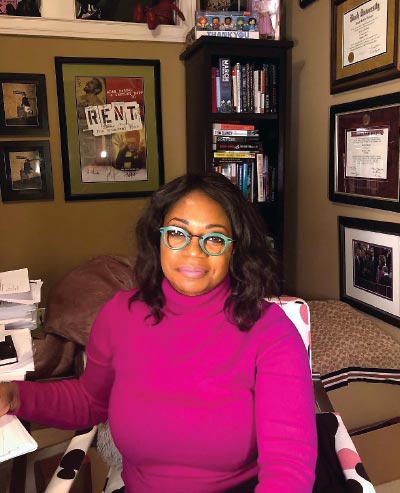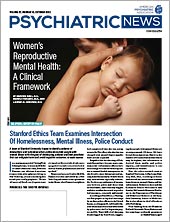In 2020, about 40% of the 250,000 women and girls who were reported as missing in the United States were people of color, even though they made up just 16% of the overall population.
“This is often referred to as a crisis hiding in plain sight,” said Dionne Hart, M.D., a member of APA’s Council on Advocacy and Government Relations and chair of the APA Assembly Committee on Public and Community Psychiatry. Hart moderated a conversation between two Minnesota legislators, Rep. Ruth Richardson and Sen. Mary Kunesh, which was hosted by APA’s Area 4 Assembly and titled “In Her Shadow: The Unrecognized Trauma of Missing Women of Color.” Hart said the program is part of Area 4’s efforts to increase awareness of the issues impacting the mental health of people of color and their communities. It was organized by Area 4’s Health Equity and Social Justice Workgroup, which Hart chairs.
Kunesh and Richardson were each successful in getting legislation passed to create, respectively, the state’s Missing and Murdered Indigenous Women Task Force and the Missing and Murdered Black Women Task Force.
“Belonging to a socially invisible community has consequences beyond being misunderstood and stereotyped,” Hart said. “It can lead to more dire outcomes, specifically the public disregard of the violence against Native American women and girls, which reflects a passive cultural genocide.”
Kunesh shared data from the Urban Indian Health Institute: In 2016, there were 5,712 reports of missing American Indian and Alaska Native women and girls, though the U.S. Department of Justice’s federal missing persons database only logged 116 cases. “I have on my desk back at the Capitol a list of over two dozen native folks who are currently still missing,” she said. “Their cases are wide open and information has been sought, but I can’t say that there are helicopters or thousands of people combing the grasslands and media [coverage] from coast to coast. That doesn’t happen for our women of color.”
Psychiatrists can play a significant role in bringing attention to the thousands of missing and murdered women and girls of color, Kunesh and Richardson said. “There’s a lot of work that still needs to be done to ensure that this is not just looked at as a problem for the Black or Indigenous communities,” Richardson said. “This is something that impacts all of us.”
Sharing expertise about trauma, particularly generational trauma, and the supports that communities need is vital, Kunesh and Richardson said. Psychiatrists can have a powerful impact by writing letters to the editor of their local newspapers and articles for professional journals to raise awareness of this problem. In addition, speaking directly with lawmakers is also hugely important. “Bring your voices to the Capitol,” Richardson said.
The trauma within the Black and Indigenous communities leads to myriad negative psychiatric outcomes, and community-based strategies to ensure that there are no barriers to treatment are greatly needed, Richardson said. “We have to center patients so that we can build trust in these systems that haven’t always treated bodies that look like ours very well,” she said.
Education about trauma is an important first step, Kunesh said, “but also, we need to provide opportunities to collaborate with individuals within these cultures.” The American Indian community, for example, approaches emotional issues around trauma in a specific way, and including people from that culture in services can make a big difference in helping survivors heal.
Unless missing and murdered women and girls of color receive the attention they deserve, their stories will continue to be lost, Richardson and Kunesh said. “That’s why representation and centering their voices are so important,” Richardson said. “But we also need allies to be with us and ensure that we don’t just continue to turn away from this crisis.” ■

